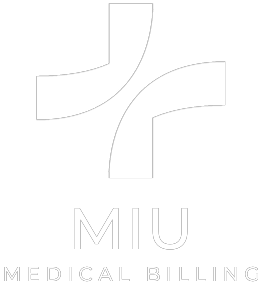Introduction
In the Texas healthcare environment, claim rejection in medical billing has always been a costly and huge hassle for healthcare providers, hospitals, and billing firms. How does a claim rejection take place? It is when a medical claim submitted is returned by the insurer because of any incorrect or missing information that prevents it from being processed for reimbursement. This issue normally requires an appeal if it happens.
Claim denials drastically affect the financial health of a practice. Studies have shown that the healthcare setups face a 5% to 10% claim denial rate, and processing these again through appeals costs somewhere between $30 and $118. These costs can quickly add up when it’s about handling thousands of claims a month, leading to significant revenue cycle damage.
This blog is all about helping healthcare professionals and medical billing firms understand and know how to reduce claim rejections by adopting our proven strategies. We will guide you through the process of minimizing disruptions and improving reimbursements by enhancing data accuracy, following regulatory best practices, and investing in automation.
Reducing Claim Rejections? Here’s How

Reducing claim rejections starts with strategically designing a unique, reliable, and error-resistant medical billing process. At the core of this process should be the need for accurate, precise, and up-to-date data entry during patient intake. Documenting correct and complete demographics and insurance information is the first and foremost step in preventing rejection, even before the claim is created.
After the first step, it is followed up by a critical step of verifying the insurance eligibility of the patient. In Texas, many private and government insurance programs like Medicare and Medicaid necessitate eligibility checks before the processing of claims. Without verifying the eligibility, claims are mostly rejected due to incorrect or inactive coverage. Hence, it’s best practice to check eligibility beforehand at all times.
Correct medical coding also plays a vital role in reducing claim denials in medical billing. Claims containing outdated or mismatched CPT, ICD-10, or HCPCS codes are most often outright rejected, the reason being non-compliance with insurer requirements. Hence, it’s really important to have updated billing software and trained coders who are well-versed with the latest guidelines. This can drastically reduce any potentially occurring errors. Furthermore, promptly filing the claims is also an essential strategy to reduce the chances of claim denials and financial losses. Time duration matters because every insurance company has a specific time window for claim submission. Missing these deadlines can lead to claims considered invalid regardless of any error.
Here are the common reasons why claims are rejected in the US.
The most common cause for claim rejection in the US is human error. This error occurs mostly when entering patient demographics or insurance details. Even a minor mistake in the spelling of names or an incorrect policy number can lead to claim denials. This is a serious issue when high-volume claims are processed, where accuracy can suffer due to time constraints.
Errors in medical coding are another common culprit. The Texas billing system relies significantly on standardized codes for the translation of procedures and diagnoses. If the codes are outdated, those will be considered incorrect when applied and potentially lead to claim rejection without any hesitation. The financial consequences can be serious; that’s why it’s important that coders are up to date with the latest codes.
Last but not least, eligibility verification is also another major concern when it comes to claim denials in medical billing. Claims are oftentimes rejected just because the patient’s insurance is inactive at the time he receives the service or the healthcare service the patient receives is not covered by the insurance plan. Also, many claims are denied because of late submissions or not meeting the deadlines set by the insurance companies.
Best Tips to Prevent Claim Rejections
Claim rejections can be prevented if medical billing is handled with utmost care and accuracy. This is made possible with uniquely designed strategies, the latest technologies, and an in-depth understanding of the insurer’s policies. Attention to operational details is a crucial aspect of medical billing altogether. Strategies can be such that they involve implementing real-time insurance eligibility verification during the patient’s check-in. Modern clearinghouse tools and staff can instantly confirm coverage and pinpoint red flags even before the patient is seen by the provider.
Medical coding guidelines frequently change. Hence, a good medical firm should have a team of coding experts with the latest updated systems. Many healthcare practices now have automated tools to run claims for error detection before the final submission. This dramatically reduced claim rejections in medical billing.
Another way to ensure claim rejections is to establish a consistent work pace for obtaining prior authorizations. Healthcare practices and medical billing firms that focus on the documentation of medical necessity clearly and accurately have far fewer issues in the claim submission and reimbursement process. It’s also essential to make sure that the claims are submitted right on time, in the time window provided by the insurance company.
Medical billing companies must have a log of all rejected claims to conduct a regular root cause analysis to determine the problem. Once the source of the issue, whether it’s due to a procedural error, an employee, or a specific insurer, it must be fixed as soon as possible to improve the financial stability of the practice.
Automation Tools and Latest Technology to Reduce Claim Rejections
In today’s modern times, technology has revolutionized everything, including medical billing. It has made it very easy to prevent claim rejections. Modern medical billing firms are now equipped with software that can automatically scan for incorrect or missing data before the claims are forwarded to the insurers. These tools ensure compliance with insurance-specific requirements and are a way to eliminate human errors.
For any healthcare practice or medical billing company, it is highly beneficial, and MIU Medical Billing experts suggest investing in the right billing software solutions, which will not only reduce claim rejections but also improve the overall revenue and financial health of any healthcare practice.
US-Specific Compliance Relation with Claim Rejection

Compliance in medical billing isn’t optional; it’s a must in the US healthcare system. Healthcare providers and medical billing companies must strictly adhere to federal regulations and state guidelines such as HIPAA and the Centers for Medicare & Medicaid Services (CMS) for coding and billing. Each state has its own unique set of payer rules and Medicaid requirements.
Texas insurers require Medicaid claims to be processed through the Texas Medicaid and Healthcare Partnership (TMHP), including its own documentation and authorization protocols. Because of variations in rules across different states in the US, healthcare providers and medical billing companies working in multiple states and with multiple insurance types should have an administrative workflow that is tailored to each region’s insurer expectations. This helps maintain compliance and significantly avoids claim denials, delays in reimbursements, and audits.
The Final Verdict by MIU Experts
In the era of technology and the modern-day world, minimizing claim rejection in medical billing is the most important aspect when it comes to maintaining the financial health of a practice. MIU Medical Billing has always been the top choice of healthcare providers because of their ability to focus on data accuracy, prompt submissions, accurate coding, and robust pre-visit verification processes. Our aim is to drastically reduce the rate of claim rejection for every client that we work with.
Our expert’s advice is to invest in automation and leverage tools that provide long-term benefits with cost-effectiveness. It’s highly crucial to have an ongoing analysis to pinpoint the root causes of claim denials so that they can be addressed for correction.
If you, as a healthcare provider, are having trouble with how to reduce claim rejections in medical billing, contact us so that our experts can help you streamline your billing processes, maximize your reimbursements, and significantly decrease your denial rates. MIU Medical Billing provides a 2- to 3-day audit trial so you can judge the working efficiency of our experts and make the right choice!
How to Reduce Claim Rejections in Medical Billing: FAQ
What is the most common cause of claim rejections in medical billing?
Claims are mostly rejected because of inaccurate, missing, or invalid patient information.
How can small practices reduce claims rejections?
They can greatly benefit from regular staff training, clear workflow documentation, basic claim scrubbers, and cloud-based billing software offering many of the same tools as enterprise platforms but at a lower cost.
How are claim rejection rates tracked?
Most RCM and billing platforms provide explained reports that help practices monitor claim rejection rates over time.




